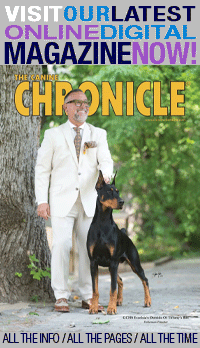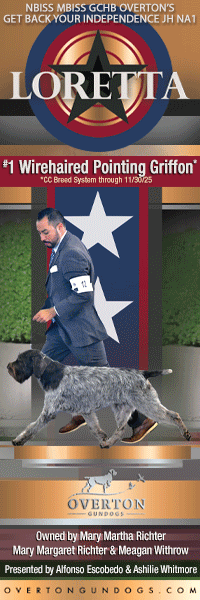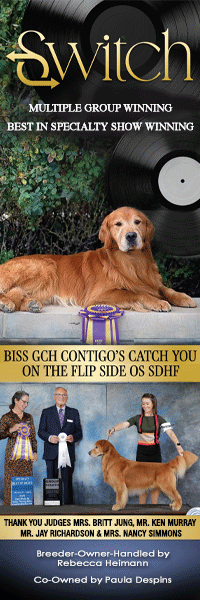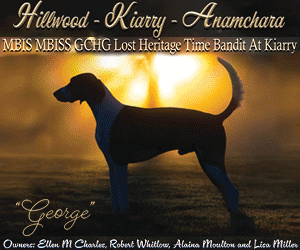Judging The American Eskimo Dog
By Helen Dorrance
Known as the “Dog Beautiful,” the American Eskimo Dog is also the dog agile and quite striking with its immediate impression of alertness and beauty. Their agility is probably derived from their circus dog heritage but American Eskimo Dogs also filled the role of family farm dog where they were expected to protect the property and herd the family flock of sheep and goats. Above all, the Eskie is quite devoted and loyal to its owner and that devotion is frequently demonstrated in the ring.
When the American Eskimo Dog enters the ring, first impressions do count. You should not think Pomeranian, Keeshond or Samoyed when viewing outline and appraising type. You will probably want to rearrange the exhibits by height. Judging all three sizes in the same ring together can sometimes be a challenge. At specialties the open classes are divided by size. At all-breed shows the open classes will be divided by size only if the club specifically requests the divided classes. American Eskimo Dogs (“Eskies”) are to be disqualified if they are under 9” or over 19”. However, if the classes are divided by size, you may need to excuse a dog for being in the wrong class, e.g. if a miniature is shown in the open toy class or open standard class. AKC appears to be quite final in their decision not to have three varieties and all three sizes are to be judged equally.
While first impressions count it is also true that looks can be deceiving. The heavy coat on some Eskies can create the optical illusion of being long bodied or short on leg. The Eskie should be just slightly longer than tall (as measured from point of shoulder to point of buttocks in an approximate 1.1 to 1 ratio). Not only can profuse coat visually change the body proportions but tail carriage can make the body look shorter or longer than it actually is. An Illustrated Guide (obtainable from the American Eskimo Dog Club of America) has some good examples to help visualize correct proportions. Coat can also affect one’s perception of bone and substance. Eskies should have adequate bone and substance for their size. The toys should not be spindly, miniatures should not be weedy and standards should not be coarse. As with all judging, your hands will need to confirm or deny what your eyes think they see. The strength and agility mentioned in the general appearance section of the standard are actual characteristics of all three sizes of American Eskimo Dogs.
Once the exhibit is on the table, it should be approached confidently, with a smile and a light touch. Listed on the low entry list, the Eskie is still rare at most shows and mostly owner handled. Neither the Eskie nor its exhibitor does well when approached by a judge who is impatient or in a hurry. Breeders have worked hard to make sure their breed is safe to judge but the Eskie’s extreme loyalty and slightly reserved nature can sometimes make it appear standoffish. When viewed from the front once again make sure the exhibit does not remind you of another breed. The keen, intelligent and alert expression called for in the standard is easy to achieve for most Eskies. As devoted as they are to their owner, they still manage to maintain an alertness and interest in their surroundings.
Starting with the head, if the exhibit appears to have a domey skull and is profusely coated you may need to feel the crown to make sure it is hair and not actually skull that gives that impression. You can also check ear set at the same time. The standard is quite detailed on Eskie head properties and An Illustrated Guide has some good illustrations/comparisons of proper ear set. The triangular, slightly blunt-tipped, always erect ears can be too big, too small, too high set or too low set—all faults that detract from the correct expression. Ears the correct shape and size, “set on high yet well apart” can sometimes be difficult to achieve but they help contribute to the overall picture of Nordic type. Stop is easy to check also and although well-defined, it should not be abrupt. The eyes are one of the breed’s most striking features. Slightly oval, dark eyes with black or brown eye rims set well apart contribute to the Eskie’s alert expression. The eye shape is more of a peach pit than an almond. Amber eye color and/or pink eye rims, lips or nose are specifically listed faults. The eskie is especially known for its black points: black nose, black eye rims and black lips. You are unlikely to see a blue-eyed Eskie but it is one of the breed’s disqualifications. Tear staining can be common and is of a cosmetic nature. It isn’t considered a health problem by ophthalmologists. Although tear stains can be distracting, they should never override type, structure or temperament. Snow nose is also of low significance. Black or dark brown eye rims and lips are more indicative of good pigment than a nose faded from lack of sunlight.
A broad muzzle contributes to the appearance of the softly wedge-shaped head. The muzzle should be no longer than the length of the skull and can be slightly shorter. Although underjaw is not directly addressed in the standard, a “strong” jaw with a full complement of teeth and scissors bite implies good depth of underjaw. It is not necessary to count teeth—bites can be assessed with a quick look. Asking the exhibitor to show you the bite is greatly appreciated by exhibitors and some may automatically show you their exhibit’s bite. Misaligned or dropped incisors do not seem to be very prevalent but it also does not seem to be significant when either of those conditions is present.
When you view the Eskie from the side you should see a compact (but not cobby) body with a proud, strong and gracefully arched neck that blends into a straight and level topline that is broad and muscular with an equally strong and muscular loin. The brisket is as deep as the elbow and as broad as necessary to support well-sprung ribs. There is a slight tuck-up just behind the ribs. As you feel for depth of chest and angulation, please be careful of any jewelry or accessories that might catch on the coat. Even buttons on a sleeve can tug on the coat and cause the Eskie to give a frightened backward glance that could be misinterpreted as an aggressive move.
Although the tail is moderately high set, it is carried loosely on the back and never tightly double curled or in a wheel shape touching the back. Please don’t expect the Eskie to keep its tail on its back the entire time it is on the table. Length of tail can be checked against the dog’s hock (it should just reach the point of hock when down). The Eskie does not need to keep its tail up the entire time it is in the ring but it should carry its tail up at some point while gaiting.
The forequarters and hindquarters are well-described in our standard. As with many standards, ours calls for good angulation front and rear with well-laid back shoulder blades. It is a bit unique in that it calls for a 20 degree slant of the pasterns. An Illustrated Guide” has a good example of the 20 degree slant called for in the standard. Removal of dew claws on the front legs is optional. Many exhibitors leave them on because they help as shock absorbers in performance events and aid in cornering on the agility course or herding field. Dewclaws should not be present on the hind legs. Upper thighs should be well-developed with the hocks well let down and straight and parallel rear pasterns. Both front and rear feet are oval and compact with well arched toes. They are well padded with hair and have black to dark brown pads with white nails.
The standard goes into great detail on everything about the Eskie coat except texture. Besides requiring a stand-off, double coat, the standard describes the amount and length of coat on all parts of the body, the pronounced ruff on dogs and bitches (mentioned at least twice), the straightness of the coat and of course the color. Perhaps texture was not considered important in a breed that doesn’t have to hunt or swim. The standard is very clear on “NO TRIMMING” of the whiskers and body coat. In a standard that says “severely penalized” only twice, please make note that trimming of whiskers and body coat is to be severely penalized. Trimming is allowed on the feet and the rear pasterns. White is the preferred color but white with biscuit cream is acceptable. In most cases the biscuit is barely perceptible, especially in dogs in full coat. However, the standard is clear that biscuit cream, like tear stains, “should not outweigh consideration of type, structure or temperament.” Any color other than white or white with biscuit cream is a disqualification.
In all, our standard calls for a well-balanced dog with a level topline both standing and moving. The Eskie should have good reach and drive as reflected by its well-angulated forequarters and hindquarters with a tendency to single track as its speed increases. Alert, agile, bold, smooth and frictionless are all adjectives used to describe the gait of the American Eskimo Dog.
Lastly, the standard discusses temperament. It is sometimes difficult to assess temperament in the two minutes allotted to judge each exhibit. Animation, expression and alertness are easiest to determine when the dog is standing naturally on its own. Although the Eskie can be protective of its owner it should not show signs of aggression. The only other time the standard assesses a severe penalty is for overly shy and overly aggressive dogs. However, many Eskies have a tendency to be slightly conservative or reserved in the ring and such conservatism should not be mistaken as shyness. As with any table breed, any rechecking of structure or refreshing of memory should be with the dog placed back on the table.
The American Eskimo Dog is an alert, well-balanced and agile dog. Please remember that no one size is preferred over another. Indeed, all three sizes participate and excel in agility trials and other performance competitions.
Short URL: https://caninechronicle.com/?p=35902
Comments are closed














